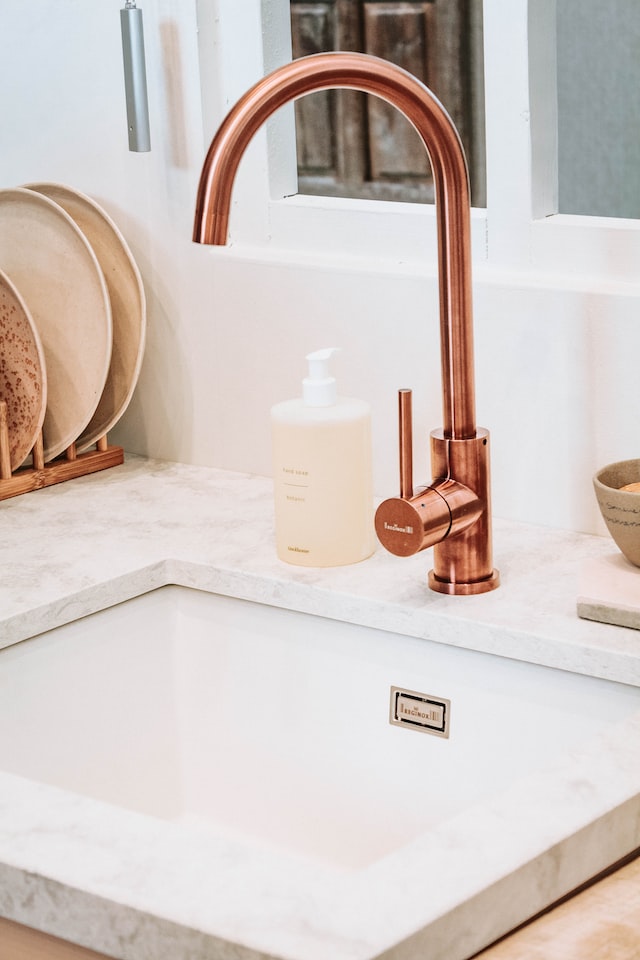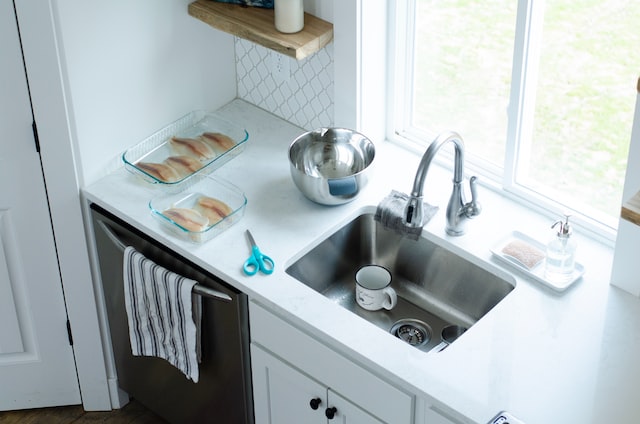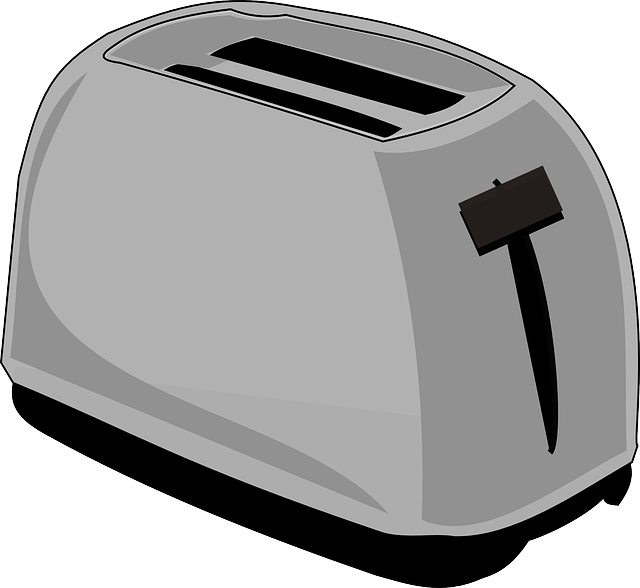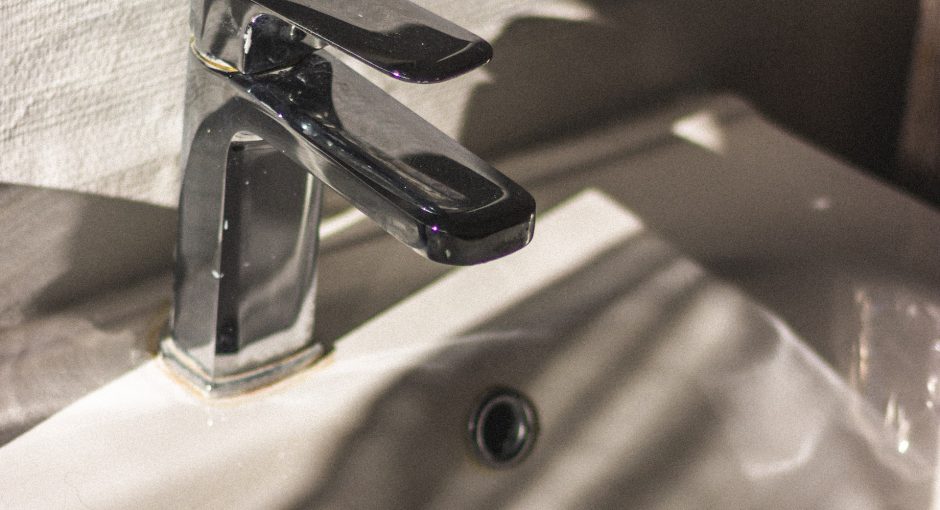If your single handle kitchen faucet is leaking or not functioning properly, it may be time for replacement. Replacing your faucet doesn’t need to be a difficult process; however, some knowledge and skills are necessary in order to complete the job safely and correctly.
First, shut off the main water valve under the sink and all hot and cold supply lines coming up from beneath the cabinet door behind the faucet (Photo 1). If your sink has an On/Off switch, use that to stop water flow.
Next, unfasten the coupling nuts attaching your faucet to both the sink and base cabinet. These should be threaded onto a tailpiece on the back of the faucet which is usually located high up under or behind the basins.
A special wrench called a basin wrench can help you reach nuts in tight places. Its ridged jaws grip notches and edges of nuts while the head of the wrench fits around them. A T-bar at one end provides leverage to tighten or loosen a nut.

Consider investing in a telescopic basin wrench ($15; Photo 5), which has an extendable shaft to reach faucets mounted behind extra-deep sink basins. Use this wrench along with either a pipe or the back end of an adjustable wrench to increase your leverage when taking out stubborn nuts from small basins without needing to climb ladders.
The next step is to use an Allen wrench or screwdriver to unscrew the handle from the main faucet valve. Although this should be a straightforward procedure, double-checking your manufacturer’s manual for accuracy will help guarantee success.
If the handle on your control mechanism is sticking, there may be an issue with either the disc cartridge or rubber seals protecting it. If these are damaged, you’ll need to replace both components: cartridge and seals.
Once the cartridge and rubber seals have been replaced, you’re ready to replace the handle. Shop for a new handle at either a hardware store or home improvement store that specializes in kitchen faucets.

Now you can take off the old faucet by taking out both retaining nuts that hold the disc cartridge in place and the lock nut that keeps it from moving. Be sure to bring your pliers along so you can lift the disc cartridge away from the body of the faucet without damaging anything in the process.
With some force, you may need to pry out the cartridge from its body; then, insert a new cartridge and seals. Additionally, you might have to replace plastic o rings and washers that protect hub assemblies that have become stuck to faucet bodies due to mineral deposits from years of usage.
Once all parts are installed and working as intended, you can reattach the handle and cartridge before closing the cabinet door.

